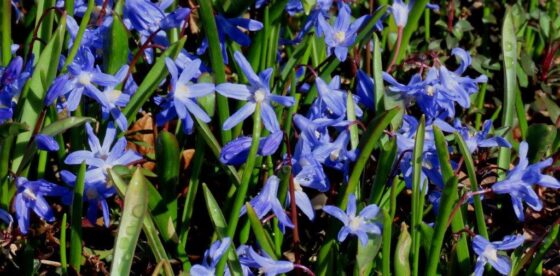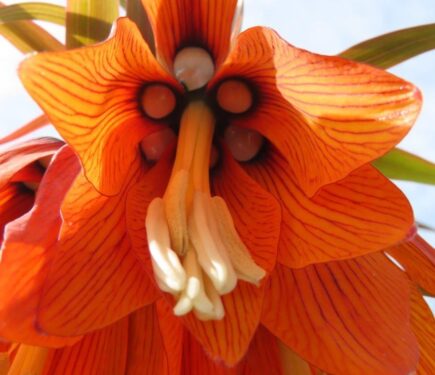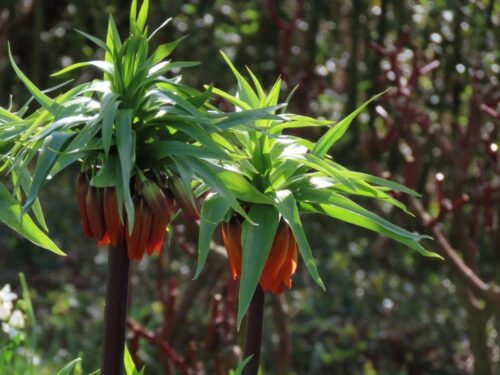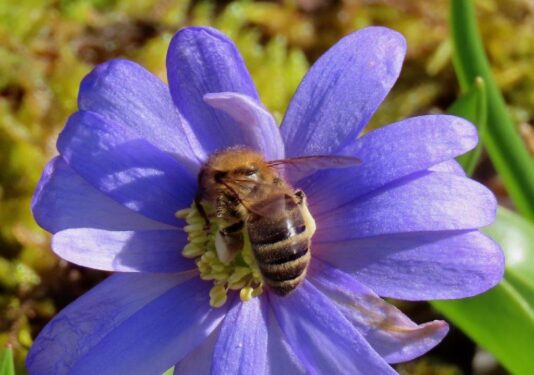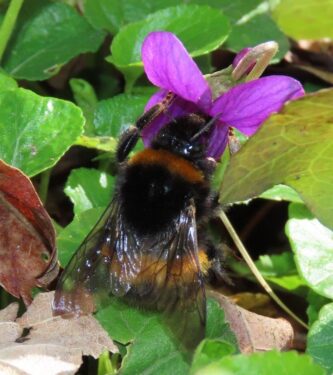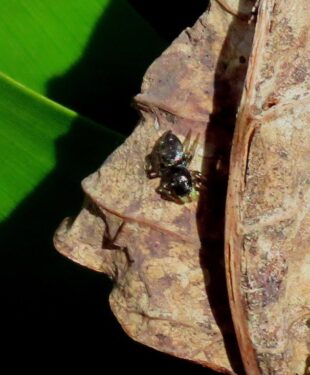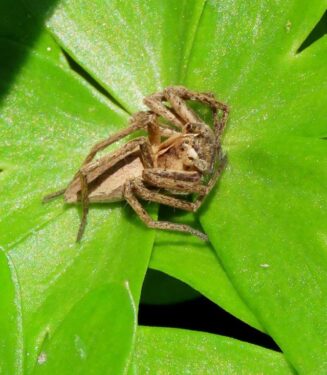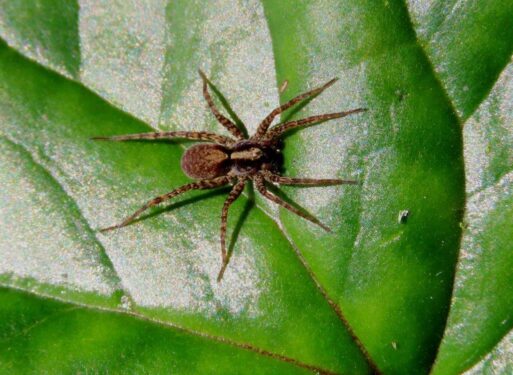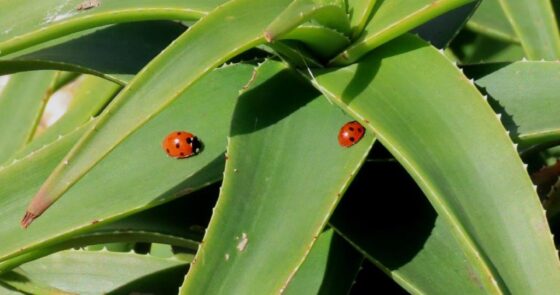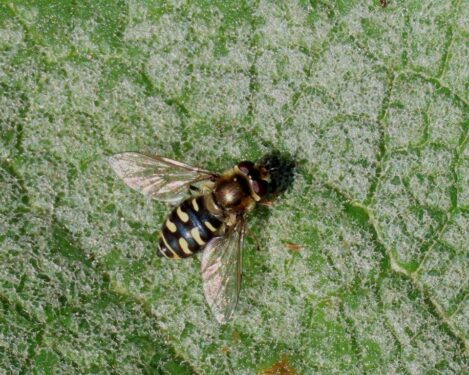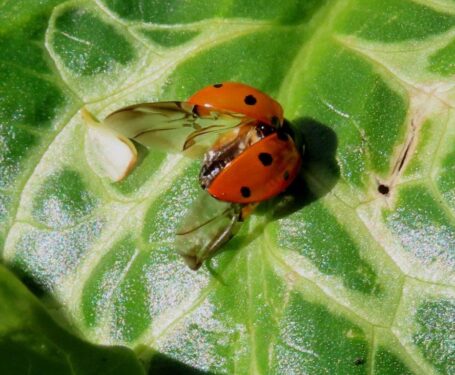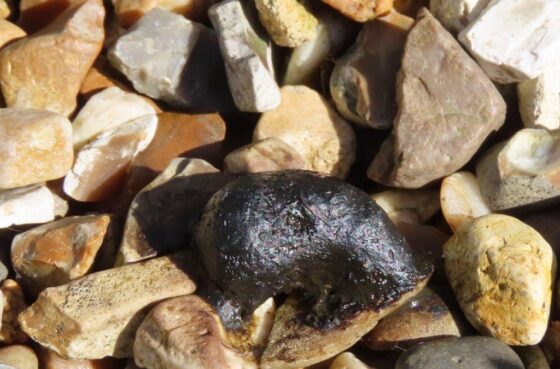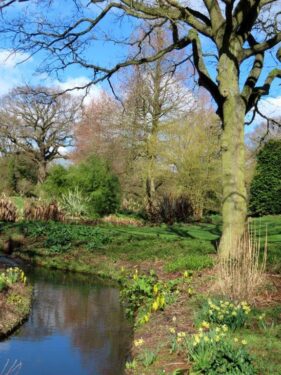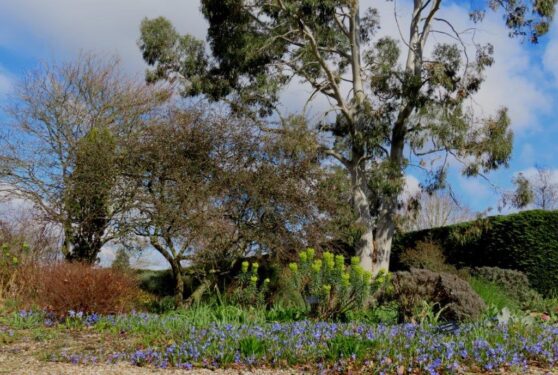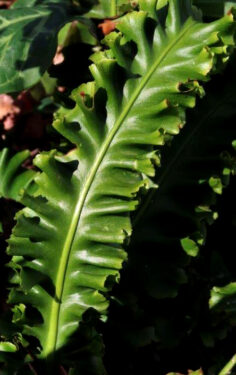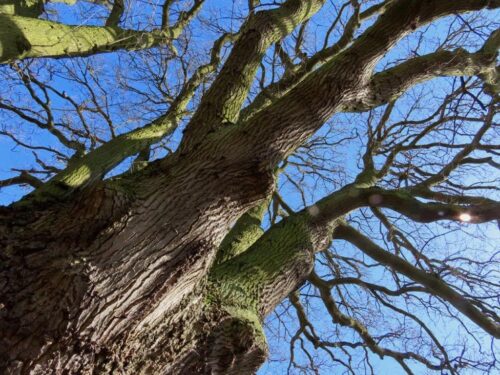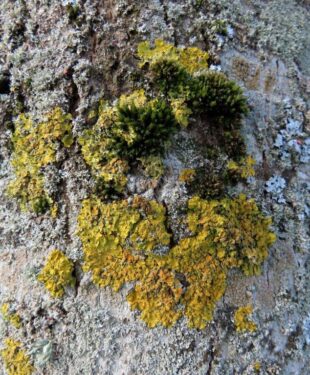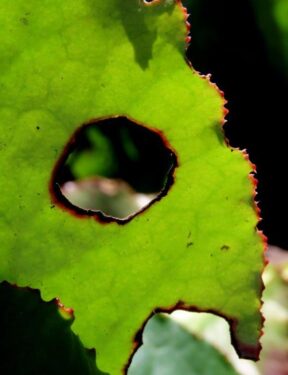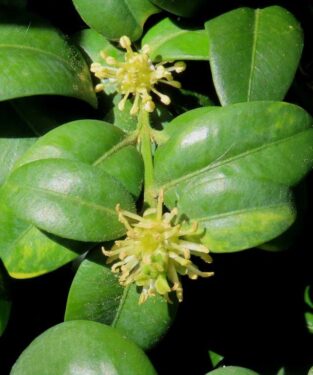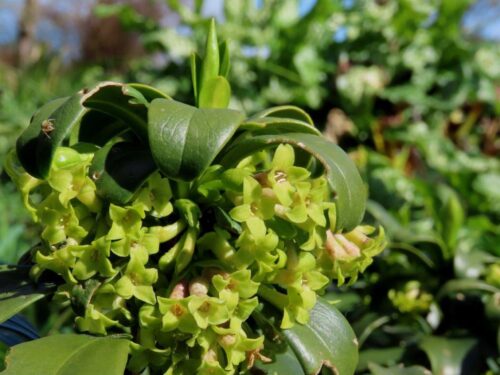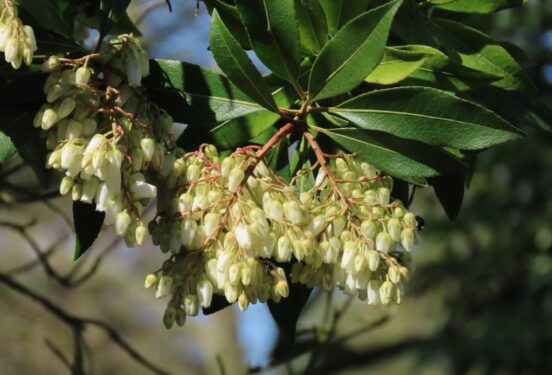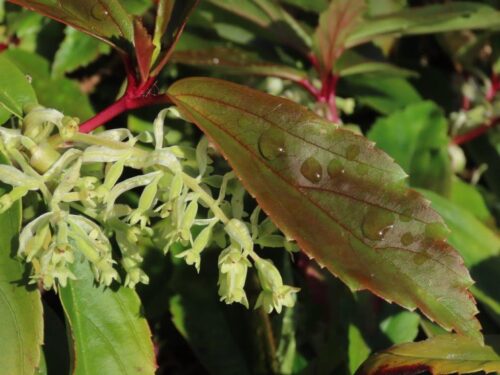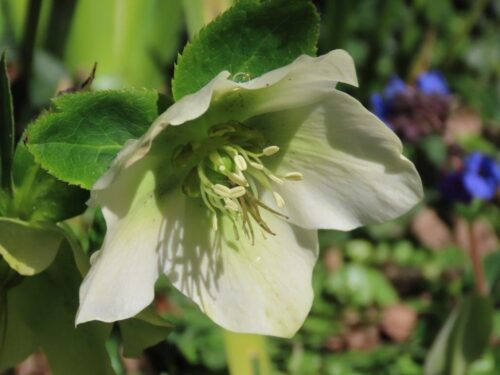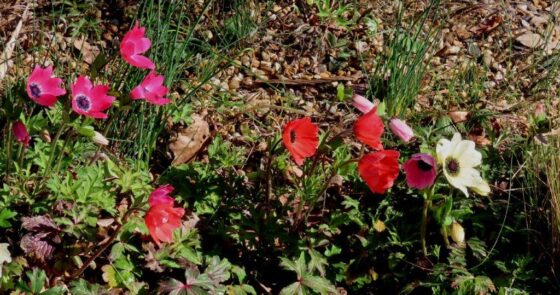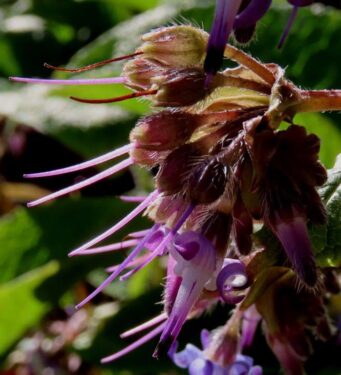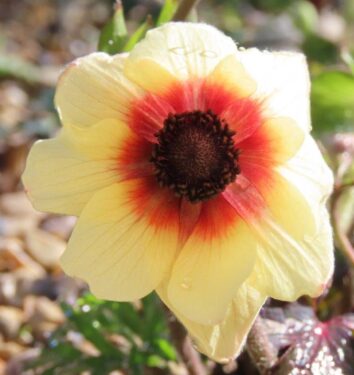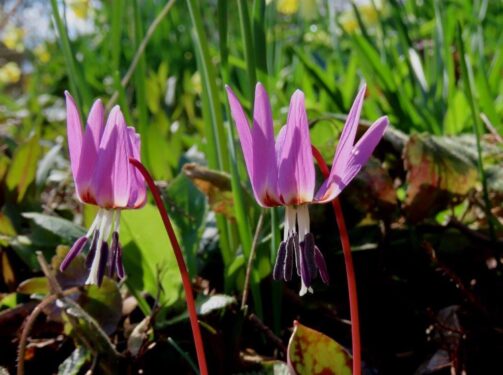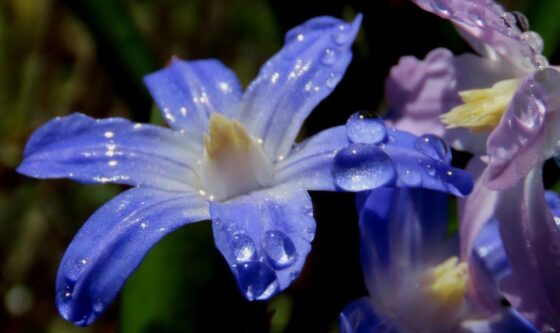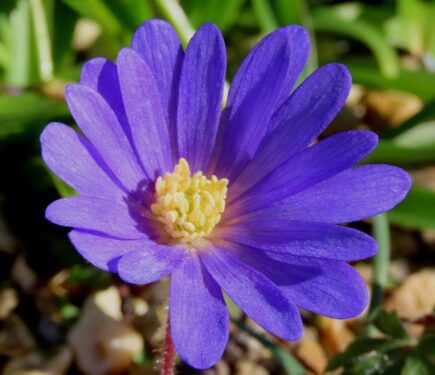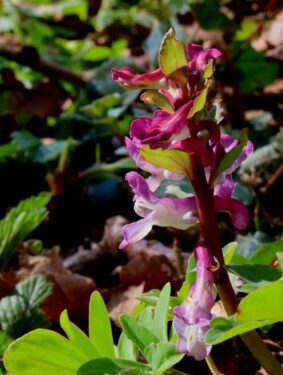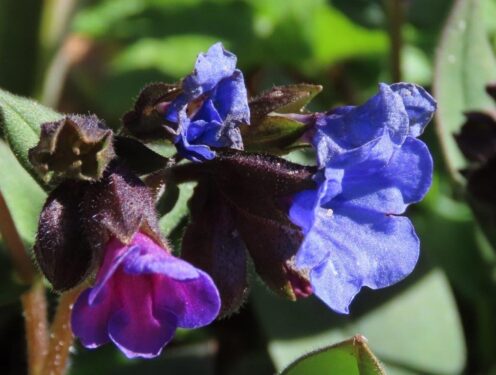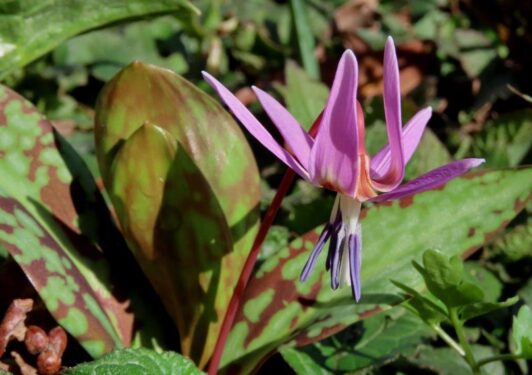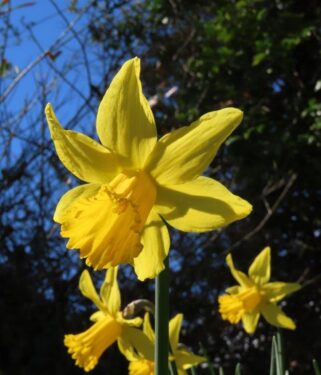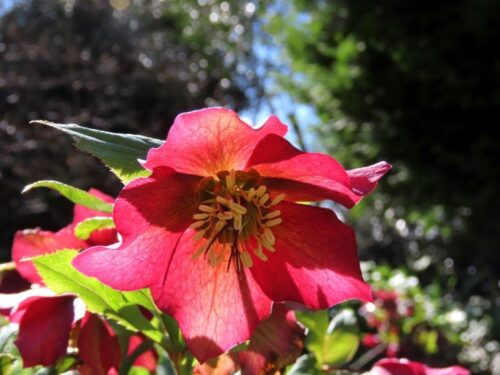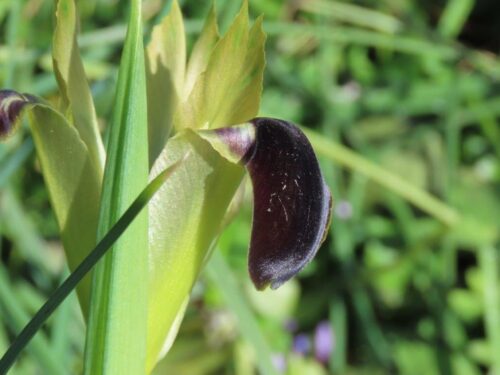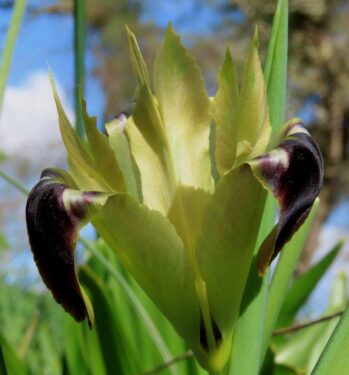Six weeks have passed, the Snowdrops and Aconites are over, and the second wave of Spring is just starting to weave its magic. The birds certainly felt it, with singing Goldcrests, Greenfinches and Chiffchaffs. But its progress is slow – a cold and dull February has certainly slowed the advance of the year, as can be seen from photos of the Crown Imperials taken one year apart…
… last year, in full foxy-scented flower, with each petal with the ‘tears of Mary’ waiting to reward pollinators; this year maybe a week or two behind that stage, although more sunny days like today would surely speed things up.
But fortunately there are plenty of other nectar sources available as Honeybees and queen Buff-tailed Bumble-bees are out in force:
Otherwise, after a cold start to the day, the invertebrate world was apricating – the act of basking in the warmth of the sun: spiders (including a Heliophanus jumping spider with hi-vis green palps), hoverflies, and everywhere ladybirds, mostly Seven-spots with a few Pine Ladybirds.
Twice we saw ladybirds sprucing themselves up after a winter of inactivity (does that sound familiar after the latest Covid lockdown?) – raising their wing cases, extending and inflating their wings several times as if to iron out the stiffness and creases of four months’ confinement.
Ladybirds and hoverflies are of course special friends to the ecologically-aware gardener, and early emergers will hopefully build large populations to help keep the populations of aphids and other potentially injurious insects in check, without the need to resort to poisoning the world around us. It was pleasing also note one of the borders had signs of another natural pesticide (in this case molluscicide) – the Hedgehog.
And everything else in the garden was looking just wonderful in the sunlight. From the wider views to the innerscapes …
… to the spring-green flowers, subtle certainly, but with an undemanding charm all of their own…
… and the ever-expanding palette of the year, brought to life by the low-level sunlight and the residues of overnight rain.
Finally, musings on the Widow Iris, so called for the widows’-weeds it wears, disporting herself with a sombre malevolence that lends itself the the alternative name of Snake’s-head Iris. Having just spent time watching the queen bumbles going about their business, this drew us in: the petals have the colour and texture of an Bee Orchid. Could this be another example of botanical insect mimicry, promising a sexual bounty, but delivering only a load of pollen? Certainly had us fooled at first…
